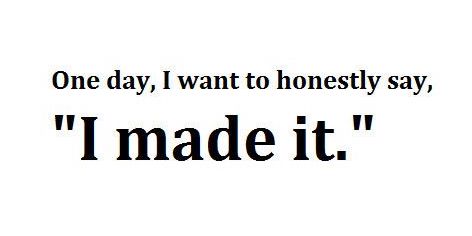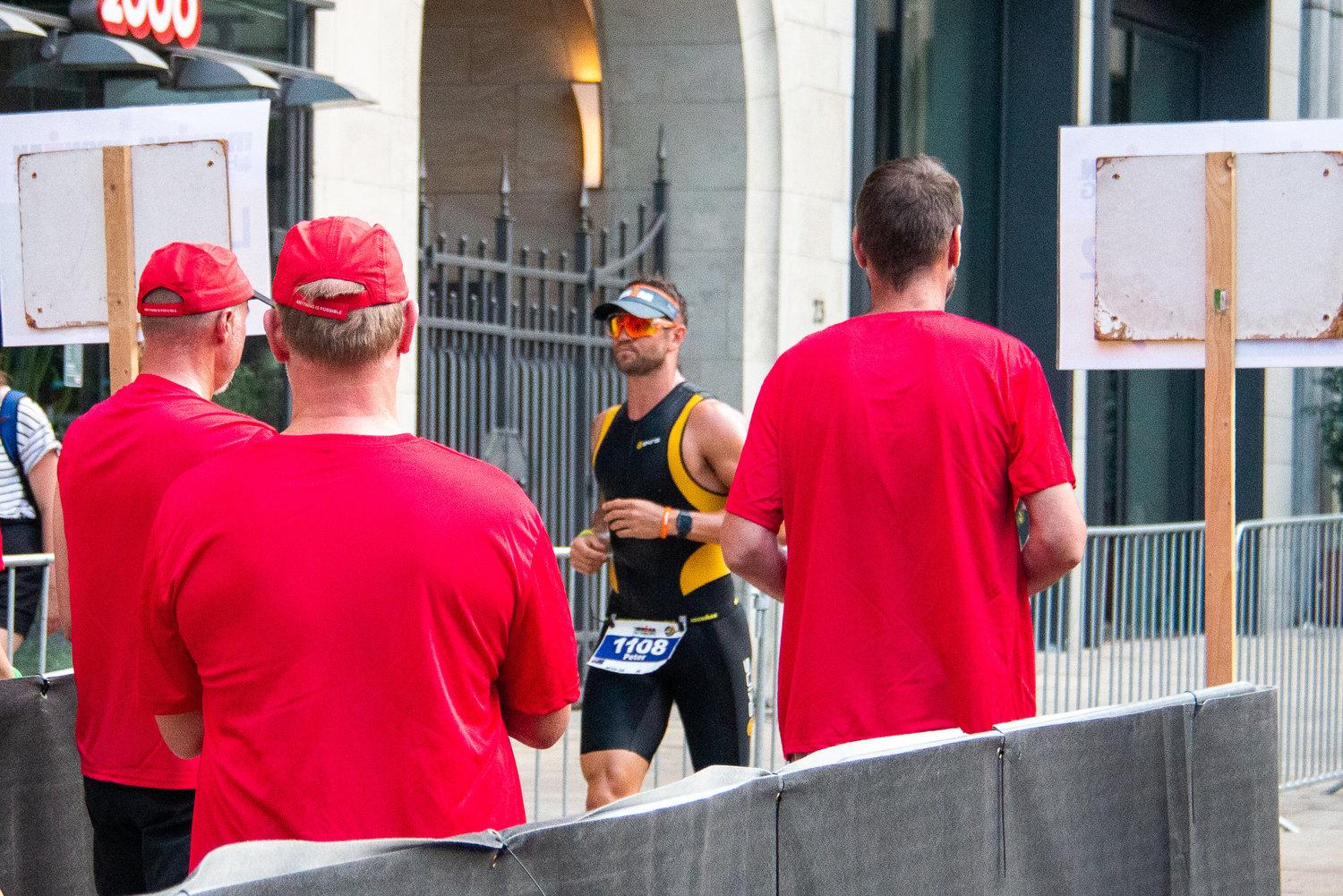Motivation can be defined as the direction and intensity of one’s efforts.
You can look at motivation from several viewpoints; motivation derived from achievements, motivation in the form of competitive stresses and intrinsic and extrinsic motivation.
The level of motivational effort depends on how much validation the individual seeks. The intensity of effort can be measured by how much focus and attention each individual put into a particular task and/or path: following on from the typical phrase, ‘what you put in, is what you get out’.
Direction and effort are separated for a reason. Direction is the belief of moving towards a goal, whereas effort is a form of self-motivation. Both require self-awareness in order to produce results. Individuals who are unaware of these factors are commonly misunderstanding where their own motivation comes from and how to get it. This also includes not understanding that motivation is not given but created.
Motivation can have an impact on all aspects of a lifestyle: sleep, diet, work, social life, and relationships. There are many individuals who have battled and overcome adversity, purely by showing immense motivation to achieve their goals. For example:
For many, getting started (taking that first step) is the most challenging part of the process. Motivation seems to be the reason people claim they are either held back, from starting or is the reason they lose interest, “due to lack of motivation”.
Retired goalkeeper - Clint Malarchuk. Clint suffered a horrific injury while playing football (a players boot blade severed his carotid artery). This kind of injury would typically require a hefty amount of recovery time, yet Clint was back playing a week later!
Professional footballer - Lionel Messi. Messi is seen as one of the most talented football players of his generation. However, he was diagnosed with hormone deficiency as a child, with his potential often questioned due to the disorder. Yet against the odds he overcame such obstacles and has been labelled ‘one the finest players ever produced’.
When adversity comes knocking the level of motivation and commitment will largely determine whether the individual will push through those barriers and stick with it, or whether they will simply just give up and avoid it.
It is believed that there are three Ds associated with motivation. Research suggests that these three D’s can influence an individual’s life or goal significantly:
Direction: Before prime motivation can be attained, the different directions an individual can go in life need to be considered. There are three choices: a) stop participating entirely b) continue at the current mundane contempt level, or c) strive to be the best.
2. Decision: The choice made will dictate the amount of time and effort an Individual will put into their sport and/or life. This will determine what level of achievement you will ultimately reach.
3. Dedication: Only by being entirely dedicated to the direction and decision can an individual or an athlete ensure that they have their prime motivation acquired thus creating a solid foundation to keep your going through adversity that you will encounter.
When you think of a highly motivated individual, do you think, top professional athletes, people who do extreme adventures willing to brave extreme environments, military personnel risking their lives for a higher course? Or the Entrepreneur who wakes up at 4am to find the next most significant idea to make him a self-made millionaire or the CEO who climbed the ladder to get to the top!
But those who have created their own bag filled with grit and motivation are the ones who get back on that horse after falling off 100 times and get back to training again and again. That’s what truly separates highly motivated from the usual paper-thin excuses. Motivation is created so you can reach into it and keep grabbing more. There is an infinite amount of “more” in the world we just need to realize and accept that we can, in fact, do more.
I’m sure your thinking “but just more is not enough,” and your right motivational science is a multifaced algorithm consisting of both internal (intrinsic) and external (extrinsic) reasons. Your own proximity to others plays a role, and the most significant player in your environment, which is the people in it, the place in which you train, sleep, work and hangout all plays a role in how you perceive to experience them. The neuroscience community has known about this biological impact of experiences, how brain used these experiences to stack our motivations. The mechanisms involved in this system is called mirror neurons which aid the speed and accuracy of our perception of where we are, what we hear, see, and smell. Mirror neurons are responsible for allowing us to internally reflect our external environments for the sole purpose of mastering it and blending in for that all-important survival instinct. This is also said to be the reason why we tend to lose or alter our speech accents or tend to mold to the people we hang out with.
Hang out with lazy people or negative people you will soon find yourself negative, agreeing with them and a little lazy than usual. Social cognition applies to motivation because we choose to feed off other highly motivated people just by being in more proximity.
Ask yourself what and who negatively impacts your health goals, and who is or instead positively impacting your life? What choices serve you for the long term and for a short time?

Common myths and mistakes around motivation include:
Motivation comes before you get started.
One of the most surprising things about motivation is that it often comes after starting a new behavior, not before. This common misconception is believing that motivation arrives as a result of passively consuming a motivational video on YouTube or by reading an inspirational quote.
There is no doubt that the right video, story, or quote at the right time can have an enormous impact on inspiring yourself. But these experiences only create a release of emotions, like a dream. And like a dream, it’s only a vision until it is written down and action is taken to pursue the dream. Emotion is what we all ultimately seek, crave and what drives all behaviors. When we are buying those shoes or favorite foods is we are actually buying into the emotion it gives, why do you think it’s so hard to give up those cigarettes, cake or spending habit.
However, active inspiration is a far more powerful motivator.
Motivation is often the result of an action. Getting started, even in a small way, is a form of active inspiration that naturally produces momentum. For example, Newton’s First Law applied to habit formation: Objects in motion tend to stay in motion. Motivation is what keeps you engaged, not what starts you off.
It’s the thought of starting that stops most people. This is why even the most inspirational stories cannot get the majority of individuals ‘off the couch’ or make the most straightforward choice towards health. Therefore, the hardest part of working out for overweight or unhealthy people, is not getting to the gym, but the decision to commit to a choice. In order to make an everlasting choice you must have accountability. Finding an individual or community with the same goals dramatically increases an individual’s chances of success. Applying one or more of these theories is said to guarantee an individual will achieve progress and remain motivated.
“Just try to do your best!”
Telling someone, or yourself, to “do their best” is believed to be a great motivator – it isn’t. As theoretically, it encourages without putting on too much pressure.
In reality, and somewhat ironically, it is more-or-less permission to be average. It implies that your limited by your best and doesn’t at all involve effort, which has no limits. You’re not here to be an average individual, and you are not in the business of building mediocre teams or getting clientele average results. So why strive for average? Why limit yourself to merely doing your best?
Edwin Locke and Gary Latham, two renowned organizational psychologists, have spent several decades studying the difference between “do your best” goals and their antithesis: specific and challenging goals.
Evidence from more than 1,000 studies conducted by researchers across the globe shows goals that are specific and challenging result in far superior performance than aiming for “your best.”
Thus emphasizing, specific and challenging goals are beneficial because difficult goals cause you to often unconsciously increase your effort, as well as focus and commitment to the target and longer persistence. This points to another topic of the importance of effort over ability, which by raised effort, you encourage a growth mindset. For example, labelling an individual’s ability will pull that person into a fixed mind-set creating a person who subconsciously settles for average.
MOTIVATION AND COMMITMENT STRATEGY #1: START WITH WHY + WHAT
Most coaches recognize the importance of goal setting yet should make some effort to help their clients/athletes achieve their goals. However, coaches can often become frustrated when their clients do not show any commitment to achieving these set goals. This results in a what they perceive as a waste of time.
The problem is, many of the traditional methods of setting goals are too transparent and fail to recognize the different kinds of motivation and commitment required. An individual need to highlight the what and why from either a personal factor or situational factor in order to move towards achieving their goals. These personal factors involve personality, needs, interests, and goals, whereas situational factors include, leader-coach styles, facility attractiveness and the community promised. Each of these factors provide stimulants that undoubtedly influence goals.
Therefore, when clients/athletes write down goals such as, ‘I want to lose 20 pounds or add 50lbs to my squat’ it can often become difficult to achieve-not because these are unachievable goals or difficult to manage, but because if they stop there then what happens? Without clear guidance or long-term goal setting there is not a compelling enough reason supporting their motivation or short-term goals.
Even though stating you want to “losing 20lbs for an event or add weight to your squat ” is a great starting point, it will not build the motivation required to stay focused when goals get hard. Having a solid long-term reason as to why you want to achieve your goal and how you plan to achieve your goal is the best way to ensure success.
Therefore, helping clients or athletes who continually struggle to bring focus, energy, and commitment understanding why they are pursuing their goals on a deeper level is a powerful tool many appear to ignore.


WHEN/HOW TO USE IT
The Why + What goal-setting strategy is ideal for clients or athletes who have a hard time articulating a profound, meaningful reason as to why they want to achieve their goals. This will be very evident by the answers provided to the simple questions outlined in the assessments section of this article, Available below for you to take right now.
If thin, surface-level answers are provided in response to “What are you hoping to achieve?”, and “Why is that important to you?”, then the Why + What strategy is not your go-to tool. the greater honestly in your answer the greater level of motivation you will gain.
Below, you will find an example of the Why + What goal-setting process you can use and adapt as needed. Being able to maximize your adherence to the task by clearly defining your goal will be the backbone of what you will use to motivate yourself. Anchors by neural association with your reasons, the key to this exercise is to be truthful, honest and have a bloody good dig at being vulnerable! because you can’t honestly develop your why if your answering questions with a bullshit answer you know is paper-thin. What are you hoping to achieve?” and “Why is that important to you?”. Thin solutions give you scrawny reasons and weak motivation.
Step #1: Choose Your Goal (Be Specific)
Seems obvious, yet so many people have no idea what they want to achieve with health, fitness, and performance. Not having a clear idea of what your goal is can cause you to be side-tracked by many of the distractions out there, preventing you from achieving anything of significance. What do you want to accomplish over the next 6-12 months with your body or your performance? What is your health, fitness or performance goal? Make this specific and measurable. You can only manage something that you are measuring. For example, “I want to lose 20 pounds in the next six months”, or “I want to add 15 pounds to my max bench press in 4 months”.
Step #2: WHY Do You Want the Goal?
Most people never take the time to write down their goals. And those that do almost always stop there. Getting crystal clear on why you want to achieve a goal is extremely important. Dig deep — there is no wrong answer! Some of your deep motivators may be extrinsic (look better in a swimsuit, make your family proud), but the motivators that hold the real power are the more profound, intrinsic motivators. Things like “The fulfillment that comes from knowing you did everything you thought you couldn’t in order to reach your max potential and perform your best - individually or as a team,” or “The personal satisfaction you’ll receive from knowing you were able to achieve something you previously thought impossible.” Those are the kinds of things we’re trying to uncover here. The key: all reasons must be significant to YOU. Get clear on your reasons. These will be your motivation bedrock for now and beyond. Don’t feel silly admitting to yourself what they are!
Step #3: What are the Benefits of Achieving Your Goal?
Now that you know your WHY, let’s talk more about specific benefits. You should get something out of all your efforts to eat healthier, work harder in the gym, and put in the hours practicing. Knowing precisely what benefits you want - and can expect - can be a huge motivator. Think back to the goal you wrote down in step #1 and fast forward to 4-6 months from now. You’ve lost the weight/gained the muscle. You won the championship. You’ve seen your accomplishments take off to levels higher than you thought possible. What are the specific benefits you have now? Are you more confident in a swimsuit? Do you have more energy during the day? Are your friends and family shocked at the changes you’ve made? Are you holding on to the memory of hoisting the trophy above your head with your teammates, knowing you will be in your clubs and mate’s history books forever as champions?
List 5-10 SPECIFIC BENEFITS.
1.
2.
3.
4.
5.
...
Step #4: What are the COSTS of Achieving Your Goal?
Alright, so we did the fun part and listed all the good things that will come of achieving your goals. But, there’s no way around this: to achieve BIG goals, you’re going to have to put in the work and make some sacrifices. That’s okay, but it’s essential to identify these “costs” ahead of time, so that when they arise you know it’s just part for the course. You’re going to have to start doing some things that take effort that you may not be used to doing. You’re also going to have to stop doing some things that aren’t consistent with your goals. What are the costs of your goal? Are you willing to sacrifice social time to practice? Are you ready to stop drinking alcohol and your favorite Starbucks coffee, or stop eating pizza so often? Are you willing to get up an hour early to work out if necessary??
Write down 5-10 specific costs of chasing your goal over the next 6-12 months (eating, exercise, time, effort, etc.)
Step #5: Do Your Benefits Outweigh the Costs?
To achieve any goal, whether it be a health and fitness goal, performance goal, or team goal over the next 4-6 months will be challenging. So, your brain’s emotional perception of what you’re going to get out of your efforts MUST outweigh the pain incurred from the costs. Do your benefits outweigh the costs? Yes, no, maybe?
Write your answer below and tell yourself WHY the benefits outweigh the costs and repeat this as often as needed…
Step #6: Your Mission Statement
Now that we’ve done all the grunt work, it’s time to put everything together into a simple mission statement that you can refer back to over the next 4-6 months. Print this statement out, tape it to your bathroom mirror and make sure you look at it every single day. Every. Single. Day!
Complete your mission statement by filling in the blanks below…
I am achieving/becoming ______ (write goal here) __________________ in the next 4-6
months because________ (write benefits here) _____________. I know that the costs
of making these changes are __________ (write costs here) _____________________________
.... Which I accept because I’m on a mission to become the strongest/healthiest/most successful version of myself.